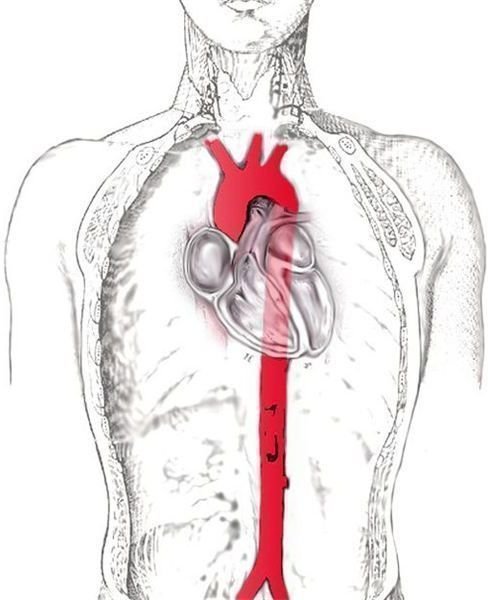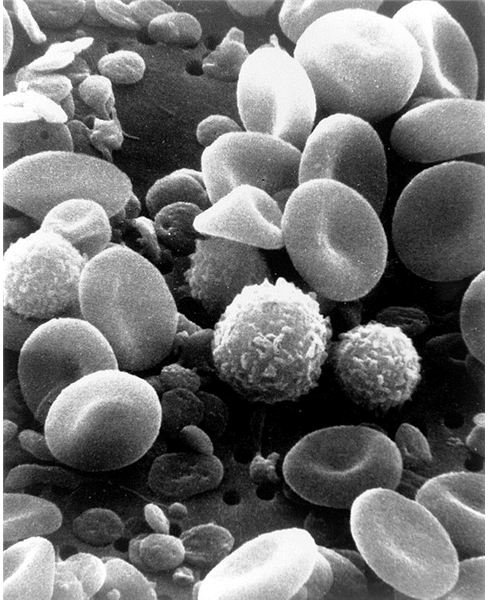How Does the Human Body Maintain Homeostasis? How Chemicals and Organs Work Together to Keep the Body in Balance
When equilibrium within the body is maintained, homeostasis is said to occur. The human body maintains a steady internal environment for the proper functioning of the body.
Maintaining a constant internal environment requires the body to make many adjustments. Adjustments within the body are referred to as regulation of homeostasis. Homeostatic regulation is comprised of three parts: a receptor, a control center and an effector. The receptor functions by receiving information about any changes that are occurring in the environment while the control center processes that information and the effector executes the commands of the control center by making changes in response.
All the organ systems of the body work together to maintain homeostasis within the body. Before we look at the various organ systems involved and how they work together to maintain a normal internal environment, we will look at the different aspects of the human body and how does the human body maintain homeostasis.
Various Factors in the Internal Environment
The constant monitoring and regulation of the internal environment is crucial for survival. Various factors that the body regulates help maintain homeostasis. We will briefly look at some of them:
1. Temperature: As warm-blooded creatures, humans constantly maintain a set temperature of their internal environment. Thermal Various organs and organ systems within the body regulate the body themrally. Liver and muscle contractions are primarily responsible for generating heat within the body. When the temperature of the body is greater than the surroundings, the skin loses heat. The body gains heat by radiation and conduction if the temperature of the body is lower than the surroundings. Evaporation is also a means of cooling down the body temperature and getting rid of excess heat. The brain also produces a lot of heat. The system of blood vessels comprising the head, allow the excess heat to escape and cool the head off.
2. Osmoregulation: Osmoregulation involves the regulation of osmotic pressure of bodily fluids. The body makes sure that the water content within the body does not become too diluted or too concentrated. Kidneys help by removing excess ions from the blood. This is then excreted as urine and affects the osmotic pressure.
3. Sugar: Sugar levels within the body are also regulated to maintain homeostasis. The pancreas secretes two hormones essential to regulating blood sugar levels. These are glucagon and insulin. A drop in sugar levels intiates the pancreas to release insulin causing glucose to be stored in the body cells as glycogen. As a result, blood sugar levels within the body are lowered. When the blood sugar levels reach a low, glucagon is released from the pancreas which causes the release of glycogen from the body cells which is then converted to glucose, raising blood sugar levels.
4. Calcium: Calcium regulation within the body occurs when calcium-sensing receptors get activated by low calcium levels. These receptors are located in the parathyroid gland. A release of PTH occurs by the parathyroid gland, which works by increasing blood calcium levels by release of calcium from bones.C cells located in the thyroid gland, release calcitonin, which helps lower calcium levels by absorption of calcium into the bones.
5. Balance of Fluids: The maintenance of homeostasis requires adequate balance of fluids within the body. This balance includes both the gain as well as loss of fluids. Antidiuretic hormone (ADH) and aldosterone are two major hormones that help maintain a fluid balance.
Organ Systems: Their Role in Maintaining Homeostasis
There are ten major organ systems in the human body. Each one plays a vital role in maintaining equilibrium within the body. All the systems work in tandem to maintain homeostasis. We will look at each one of these briefly and how they work together to maintain homeostasis:

1. Integumentary, Muscular and Skeletal Systems: The integumentary system is comprised of the skin, nails, hair and glands. The muscular system consists of skeletal muscle, smooth muscle and cardiac muscle. The skeletal system consists of all the bones, ligaments, connective tissue and tendons. The integumentary system’s main function is to protect the body from foreign infections and thermal regulation. The muscular system is involved in activities such as digestion, walking, running, breathing and picking up objects. The skeletal system involves proper posturing of the body and locomotion. The muscular and skeletal system work in tandem as the muscles are supported by a framework of the skeletal system. The integumentary system maintains the muscular system by helping the body to cool off as the skin dilates getting rid of excess heat. The three systems work together to maintain homeostasis.
2. Lymphatic and Digestive Systems: The lymphatic system, also known as the immune system, is responsible for protecting the body from foreign invasion. Lymph, lymph nodes, vessels, tonsils, thymus and the spleen all comprise the organs of the lymphatic system. The digestive system is responsible for the digestion and absorption of the nutrients from the food. This system comprises the mouth, pharynx, esophagus, stomach, large and small intestines. Absorption of substances from the digestive system also occurs through the lymphatic system. Toxins are also absorbed by the lymphatic system from the digestive system. This is one of the ways in which these systems maintain homeostasis.
3. Endocrine System: The endocrine system secretes various hormones that affect the overall growth and development of the body. Metabolism is also one of the processes of the body which is regulated by the endocrine system. The release of hormones directly into the bloodstream is also regulated by the endocrine system. Various systems such as the nervous system, the circulatory system, the muscular system and all the other major systems of the body are regulated by the endocrine system. This helps achieve homeostasis.
4. Circulatory System: The circulatory system, also known as the cardiovascular system, is responsible for the circulation of blood throughout the body. Waste products are removed and the transportation of hormones and nutrients throughout the body also takes place through the circulatory system. Practically every other system in the body is reliant upon the circulatory system for supplying nutrients, oxygen and the removal of waste products. This system works in tandem with all the other systems to maintain homeostasis.
5. Respiratory System: The respiratory provides oxygen to the circulatory system and works in tandem with the circulatory system. It is also responsible for the removal of wastes from metabolic processes. The supply of oxygen and the removal of wastes generated by the respiration of cells, both help maintain homeostasis in the body.
6. Urinary System: This system is primarily responsible for getting rid of excess wastes in the body and regulating body fluids. Balance of electrolytes within the body is also maintained by the urinary system. The urinary system is also responsible for maintaining red blood cell count within the body and the optimum pH levels in the blood. All of these functions help maintain homeostasis within the body.
7. Nervous System: The nervous system is comprised of the central nervous system and the peripheral nervous system. The hypothalamus within the brain is one of the key players in the human body in maintaining homeostasis. It affects the autonomic nervous system, responsible for controlling all the other organs in the body, and the pituitary gland, the ‘master gland’, that controls all the other glands in the body. The nervous system regulates all the other systems in the body in order to maintain homeostasis.
In Conclusion
We have briefly looked at how at how homeostasis within the body is maintained. The various organ systems and organs involved work together to constantly maintain a stable internal environment. The proper functioning of the body requires all systems to work together and in proper condition. Many diseases can affect the various organs and organ systems of the body. Homeostatic imbalance occurs when homeostasis within the body cannot be maintained and can lead to death. It is therefore essential to take care of the body and maintain it so as to keep all systems in good working condition.
References
1. Science Encyclopedia: https://science.jrank.org/pages/4908/Organs-Organ-Systems.html
2. Google docs: https://docs.google.com/viewer?a=v&q=cache:M-NUBCzJe1IJ:kilby.sac.on.ca/departments/science/snc2d/CourseDocs/sb_pdf/is10_unit_a2-3.pdf+homeostasis+maintained+by+different+body+systems+working+together&hl=en&gl=ca&pid=bl&srcid=ADGEESgvkYg1iUvB-PppsDsMluJQUcyVJatrtzR3YR42HWMavyFz98P1fXigXb9YDvnaDaOBQfLvDGnlKOtczwa3g6sG67WP5_iWNmdSChJ5UWj6RDHmlzR0dMUNGsCAAZi-Q2m1f3cb&sig=AHIEtbRvf70AJqoI4ZRfgKgJCa5xJcB3qw&pli=1
3. Wiki Books: https://en.wikibooks.org/wiki/Human_Physiology/Homeostasis
Image Credits:Wikimedia Commons/BruceWetzel,HarrySchaefer/JHeuser
